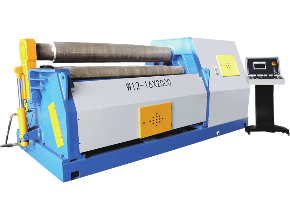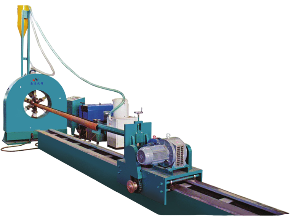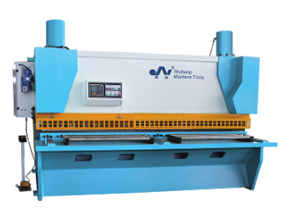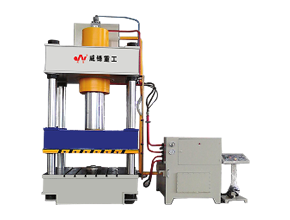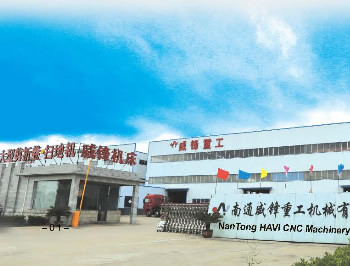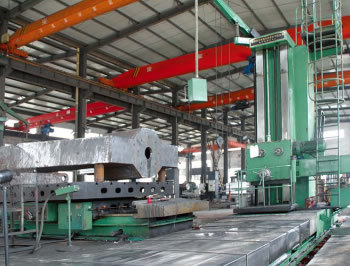CNC hydraulic plate bending machine safety regulations
Release Time:
2025-03-12
The following are the safety operating procedures for CNC hydraulic plate bending machine:
I. Preparation before operation
1. Personnel training
Operators must be professionally trained, familiar with the structure, performance, working principle and operation of the bending machine, and understand the relevant safety precautions. Only after passing the examination can they operate the equipment independently.
2. Check the environment around the equipment
Ensure that there are no obstacles around the bending machine, the workplace is clean, dry and well-ventilated. Avoid operating in a wet, cluttered environment to prevent slipping, tripping, and electrical equipment moisture and other safety hazards.
At the same time, make sure that there is enough space around the equipment for the operator to operate and maintain, as well as to be able to quickly evacuate in case of emergency.
3. Equipment Inspection
Check the appearance of the bending machine to see if there is any damage, looseness or deformation of the parts, especially the guards, transmission parts and electrical system. If there is any problem, it should be repaired or replaced in time.
Check the oil level, oil temperature and oil quality of the hydraulic system. The oil level should be within the specified range, the oil temperature is generally not more than 60 ℃, the oil quality should be clean and free of impurities. Check whether there is leakage of oil pump, oil cylinder, oil pipe and other parts, and the leakage should be dealt with in time.
Check whether the wiring of the electrical system is firm, and whether the buttons, switches and indicators work normally. Turn on the power supply of the equipment, check whether the CNC system can start normally, each sit to check the mold of the bending machine, to ensure that the mold is installed correctly and firmly, no damage to the edge, wear within the allowable range. And according to the requirements of the bending workpiece, select the appropriate size and type of mold.
Second, the precautions in the operation process
1. Workpiece placement
When placing the sheet, to ensure that the surface of the sheet is flat, clean, no oil, rust and other impurities. For larger or heavier sheets, it is necessary to use auxiliary equipment (e.g. crane, forklift, etc.) for transportation to prevent the operator from being injured due to excessive force.
Place the sheet accurately on the bending machine table so that the bending line of the sheet is aligned with the centerline of the die and the deviation should not exceed the specified range. And the sheet should be placed smoothly on the table to prevent it from moving during the bending process.
2. Parameter setting
According to the bending requirements of the workpiece, accurately set the bending angle, bending length, pressure and other parameters in the CNC system. Setting process, we must carefully check the parameter values, to avoid parameter setting errors and lead to workpiece scrap or equipment damage.
When adjusting the parameters, pay attention to the display of the CNC system and prompt information to ensure that the parameters set by the system is correctly received and stored. At the same time, for some key parameters (such as pressure parameters), according to the material of the sheet, thickness and other factors to make reasonable adjustments, to prevent excessive pressure resulting in mold damage or sheet rupture.
3. Start-up operation
Before starting the bending machine, the operator should stand in a safe position, and no part of the body can be in the range of motion of the mold. And make sure that other people around are also in a safe area.
After pressing the start button, closely observe the operation of the equipment. Pay attention to observe whether the movement of the mold is smooth and normal, whether the pressure of the hydraulic system is stable, and whether the bending process of the workpiece is in line with expectations. If abnormal conditions are found, such as abnormal noise, vibration, hydraulic system leakage, etc., the emergency stop button should be pressed immediately to stop the equipment operation.
4. Bending process monitoring
- During the bending process, it is strictly prohibited to put your hands or other objects into the working area between the molds. Even if the equipment is equipped with safety guards, it should not be taken lightly. If there is a need to adjust or check the workpiece, you must first stop the equipment operation and wait until the mold has completely stopped the movement before proceeding with the operation.
- For some complex bending processes or multi-step bending operations, follow the pre-set procedures and steps to ensure that each step of the operation is accurate. And in each step after the completion of bending, to check the quality of the workpiece bending in a timely manner, such as the discovery of problems, should be promptly adjusted parameters or replace the mold and then re-bending.
Third, the operation of the maintenance and maintenance
1. Equipment cleaning
After completing the bending operation, the first thing to do is to turn off the power of the equipment, waiting for the equipment to stop running completely, and then clean up the work. Clean up the surface of the equipment, dust, iron filings and other debris, to maintain a clean appearance of the equipment.
Clean up the residual plate and oil on the mold to prevent rust and damage to the mold. Special mold cleaner and tools can be used to clean up, and after cleaning up, rust-proof oil should be applied to the surface of the mold.
2. Equipment Inspection and Record
Carry out a comprehensive inspection of the equipment to see if there is any abnormal wear and tear, looseness or damage to the components. Focus on checking the hydraulic system and electrical system, if any problem is found, record and arrange for maintenance.
Record the operation of the equipment, including the working time, the number and specifications of the bending workpiece, the equipment
Next Page:
Related News


